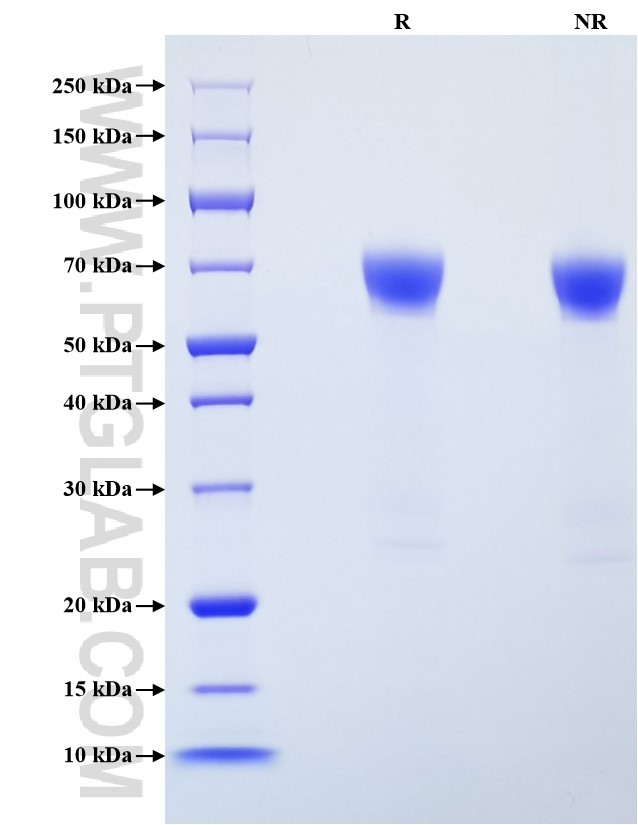Recombinant Human ICAM-1/CD54 protein (His Tag)
ED50
/
Species
Human
Purity
>95 %, SDS-PAGE
GeneID
3383
Accession
P05362
验证数据展示
Technical Specifications
| Purity | >95 %, SDS-PAGE |
| Endotoxin Level | <1.0 EU/μg protein, LAL method |
| Biological Activity |
Not tested |
| Source | HEK293-derived Human ICAM-1 protein Gln28-Glu480 (Accession# P05362) with a His tag at the C-terminus. |
| Predicted Molecular Mass | 53.6 kDa |
| SDS-PAGE | 60-75 kDa, reducing (R) conditions |
| Formulation | Lyophilized from sterile PBS, pH 7.4. Normally 5% trehalose and 5% mannitol are added as protectants before lyophilization. |
| Reconstitution | Briefly centrifuge the tube before opening. Reconstitute at 0.1-0.5 mg/mL in sterile water. |
| Storage |
It is recommended that the protein be aliquoted for optimal storage. Avoid repeated freeze-thaw cycles.
|
| Shipping | The product is shipped at ambient temperature. Upon receipt, store it immediately at the recommended temperature. |
Background
Intercellular adhesion molecule 1 (ICAM-1, also known as CD54) is a transmembrane glycoprotein of the immunoglobulin superfamily and is critical for the firm attachment and transmigration of leukocytes out of blood vessels and into tissues. ICAM-1 is expressed by several cell types, typically on endothelial cells and cells of the immune system, and its expression can be up-regulated by various stimuli, including TNF-α, INF-γ, IL-1 and thrombin. It is a ligand for LFA-1 and Mac-1, serves as a receptor for rhinovirus, and is one of several receptors used by Plasmodium falciparum. ICAM-1 can exist as membrane-bound form (mICAM-1) and soluble form (sICAM-1). The sICAM-1 arises from alternative splicing and proteolysis of mICAM-1 and appears to be associated with leukocyte activation to produce LFA-1.
References:
1. M L Dustin, et al. (1986) J Immunol. 137(1):245-54. 2. S D Marlin, et al. (1987) Cell. 51(5):813-9. 3. D E Staunton, et al. (1989) Cell. 56(5):849-53. 4. A R Berendt, et al. (1989) Nature. 341(6237):57-9. 5. Charlotte Lawson, et al. (2009) Pharmacol Rep. 61(1):22-32.
